Ariane 5 Rocket Launches 2 New Communications Satellites
Intelsat 39 and the first European Data Relay Satellite (EDRS-C) have successfully reached orbit.
Arianespace launched an Ariane 5 rocket Tuesday afternoon (Aug. 6) from Kourou, French Guiana, sending two new telecommunications satellites into orbit.
The Ariane 5 rocket, designated VA249, lifted off from Ariane Launch Complex No. 3 (ELA-3) at the Guiana Space Center, at 4:30 p.m. local time (3:30 p.m. EDT; 1930 GMT), carrying the Intelsat 39 and EDRS-C communications satellites for Intelsat and the European Space Agency, respectively.
"And right on time, Ariane 5 began her mission lifting off from the ground here in French Guiana with a lot of fire and with two new satellites rising into the bright blue sky...trailing exhaust flames of gold," a launch commentator for Arianespace said during a live webcast of the launch.
In Photos: Ariane 5 Rocket Launches Intelsat 39 and EDRS-C Communications Satellites
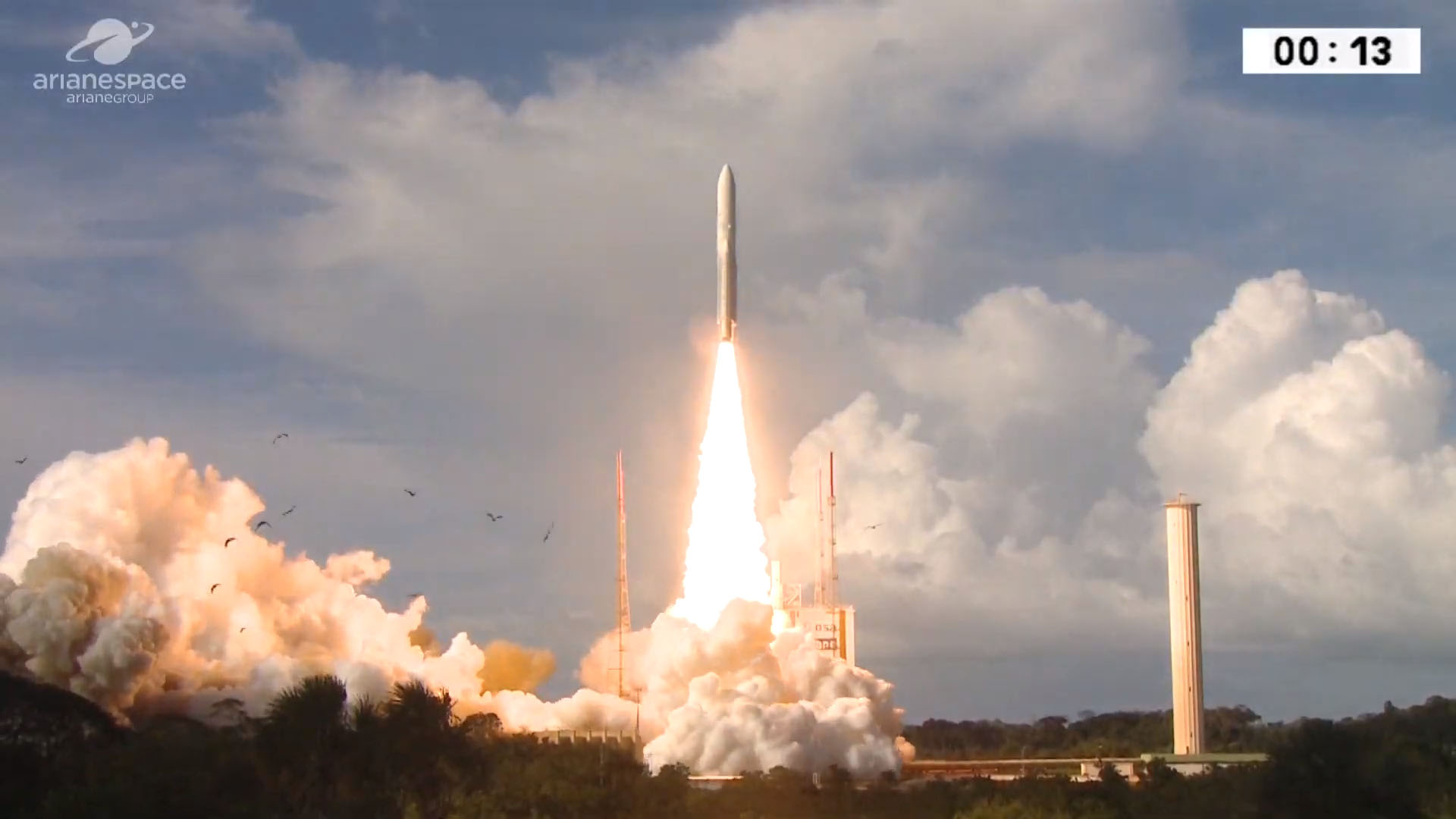
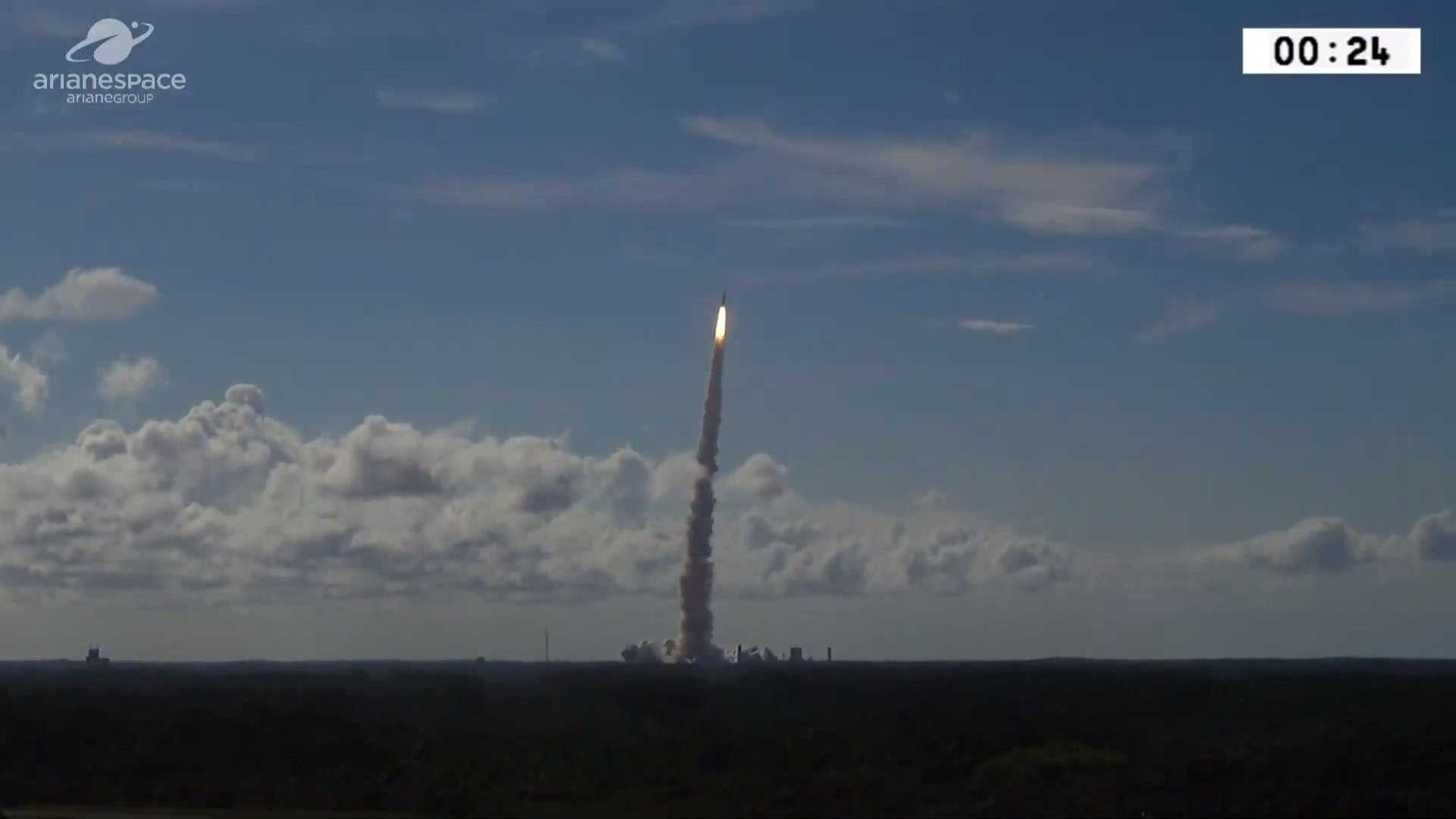
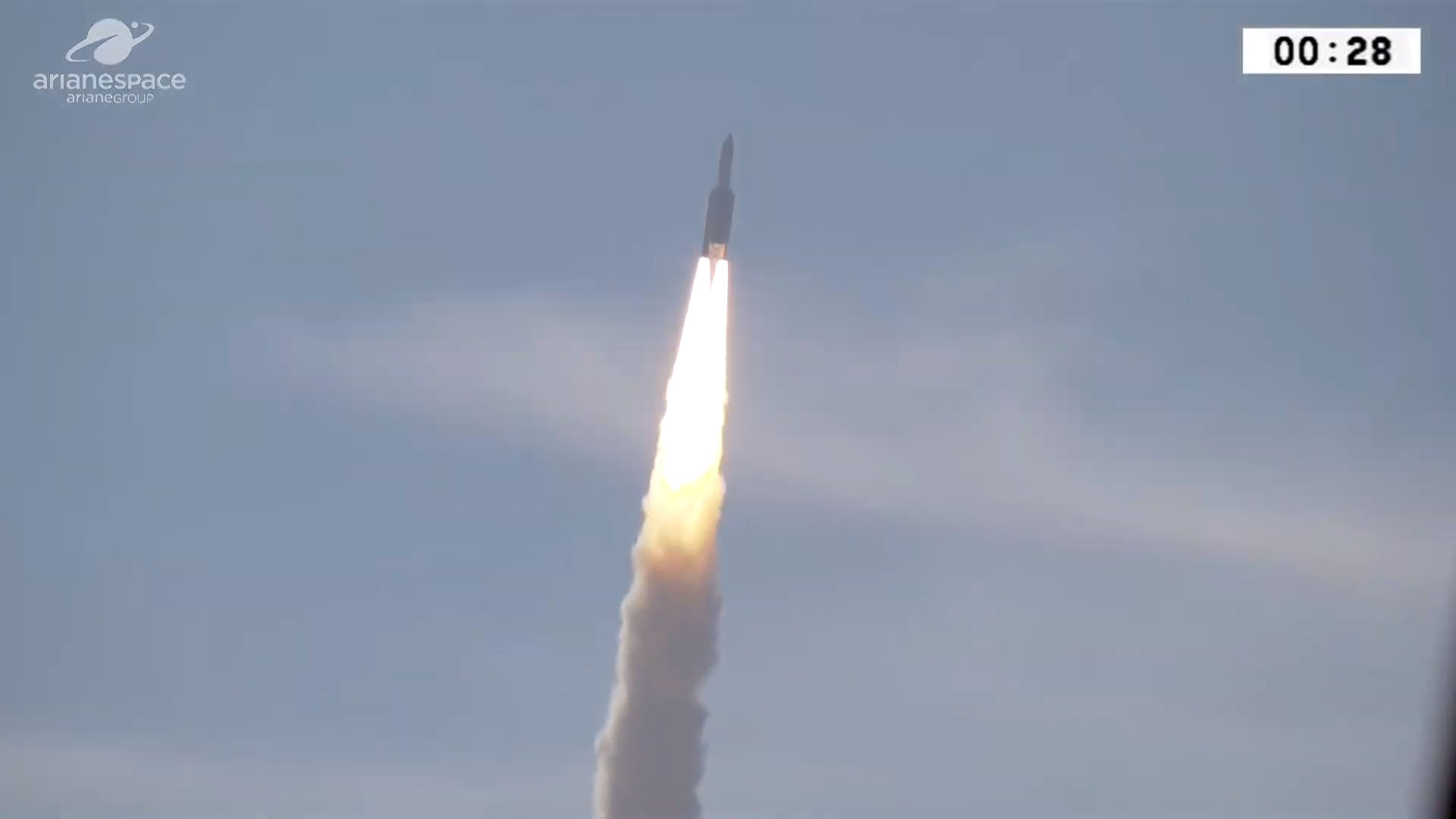
Intelsat 39
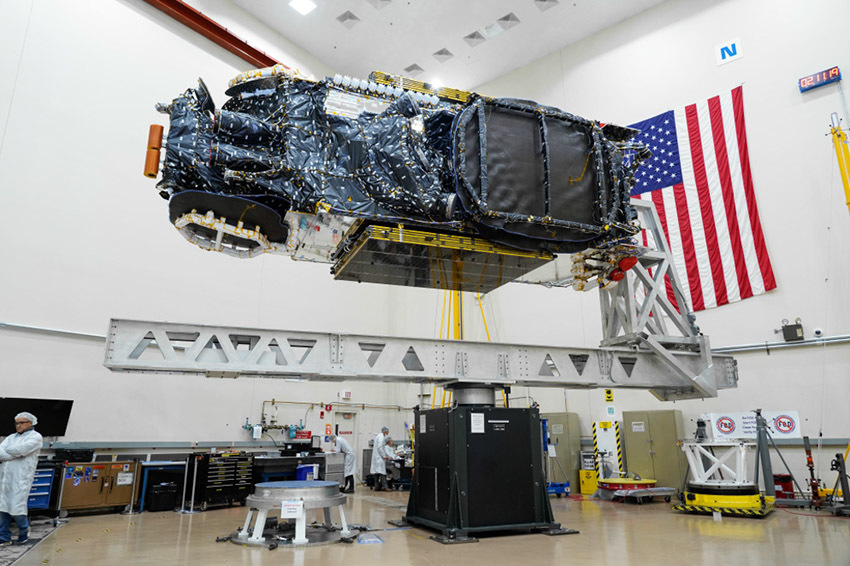
The Intelsat 39 telecommunications satellite will serve broadband networking, video and government customers across Africa, Europe, Asia, the Middle East and the Indian Ocean region, replacing Intelsat 902, which was launched back in 2001 and had already exceeded its 13-year design life expectancy.
Intelsat 39 is designed to provide mobile network operators, enterprises and internet service providers with the ability to increase the speed and efficiency of their connectivity services, according to a statement by Arianespace. The satellite will also increase mobile connectivity for those regions' aerospace, maritime and government clients.
The hefty, 14,600-lb. (6,600 kilograms) satellite was the first to separate from the rocket's upper stage, 29 minutes and 9 seconds after liftoff. It was followed by the mission's second payload, EDRS-C, which separated after 33 minutes and 31 seconds.
Get the Space.com Newsletter
Breaking space news, the latest updates on rocket launches, skywatching events and more!
EDRS-C
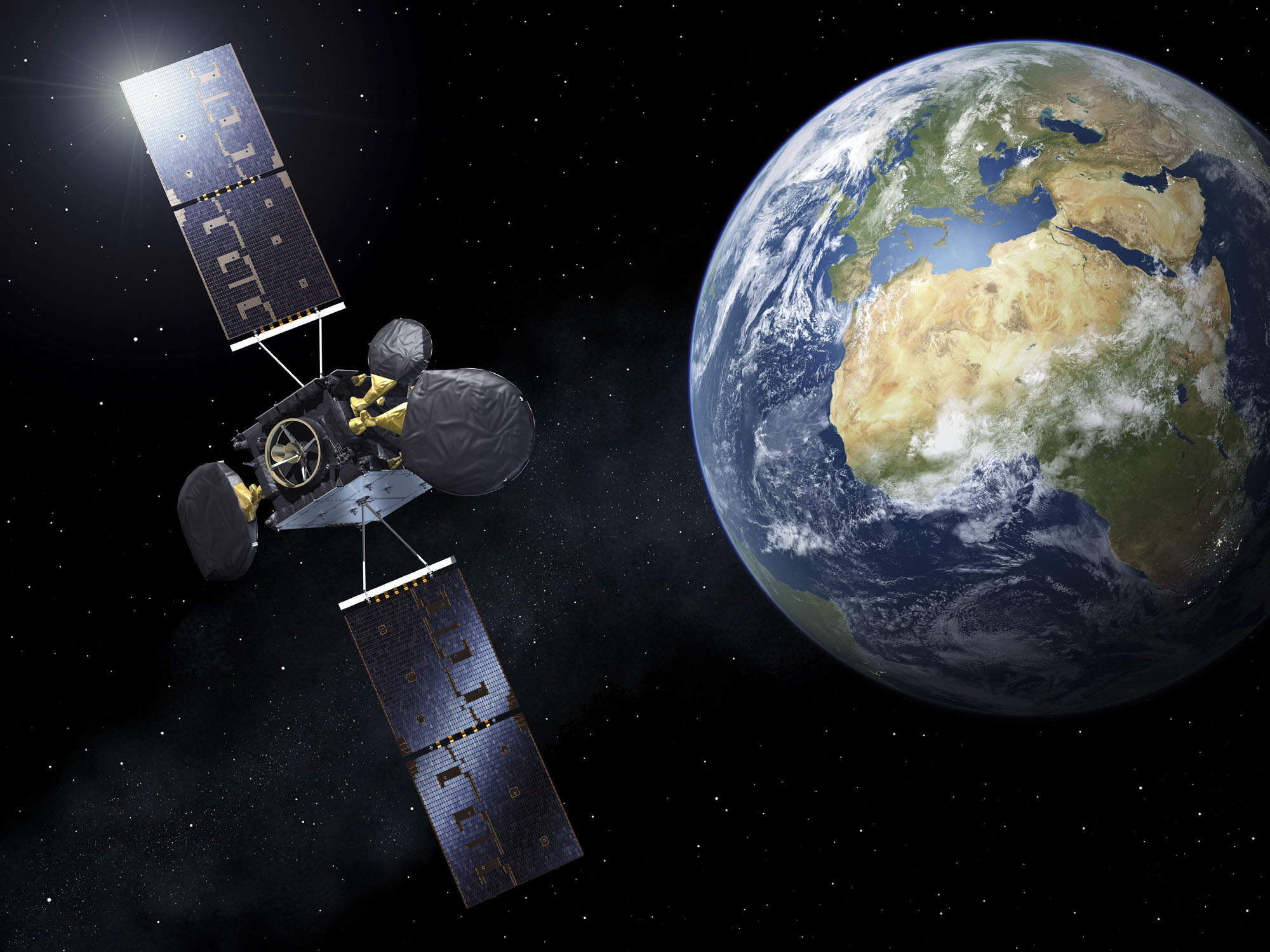
The mission's second payload, a European laser communications satellite, will facilitate high-speed transmissions between satellites in orbit and ground stations on Earth. EDRS-C is part of a public-private partnership between the European Space Agency (ESA) and Airbus, and the second in the "SpaceDataHighway" network — more formally known as the European Data Relay System. The network is the world's first optical-fiber one in the sky designed to improve environmental and security monitoring, as well as disaster response and crisis management.
The first satellite, EDRS-A, was launched in January, 2016, on board a Proton rocket from Baikonur, Kazakhstan.
The satellite will use laser technology to transmit data to Earth in near real-time — a process that can otherwise take hours — allowing the transmission of more images and videos by Earth-observing satellites.
EDRS-C is slightly smaller and lighter than its co-passenger on the Ariane 5 rocket. The laser satellite weighs 7,024 lbs. (3,186 kg) on Earth, or about half the weight of Intelsat 39.
Both Intelsat 39 and EDRS-C are geostationary satellites, which means that they hover over the same part of the globe all the time. Intelsat 39 orbits above Earth's equator at a longitude of 62 degrees East, while EDRS-C stays at 31 degrees East.
This marks Arianespace's third flight with Ariane 5 this year. However, the last rocket launch by Arianespace did not go as smoothly as a European Vega rocket suffered a "major anomaly" while launching a satellite for the United Arab Emirates on July 10, leading to the loss of the rocket and its payload.
- Ariane 5 Rocket Lofts 2 Satellites into Orbit in Gorgeous Sunset Launch
- SpaceX Launches Super-Heavy Intelsat 35e Satellite (Photos)
- Space Launch Calendar 2019: Sky Events, Missions & More
Follow Passant Rabie on Twitter @passantrabie. Follow us on Twitter @Spacedotcom and on Facebook.
Join our Space Forums to keep talking space on the latest missions, night sky and more! And if you have a news tip, correction or comment, let us know at: community@space.com.

Passant Rabie is an award-winning journalist from Cairo, Egypt. Rabie moved to New York to pursue a master's degree in science journalism at New York University. She developed a strong passion for all things space, and guiding readers through the mysteries of the local universe. Rabie covers ongoing missions to distant planets and beyond, and breaks down recent discoveries in the world of astrophysics and the latest in ongoing space news. Prior to moving to New York, she spent years writing for independent media outlets across the Middle East and aims to produce accurate coverage of science stories within a regional context.









